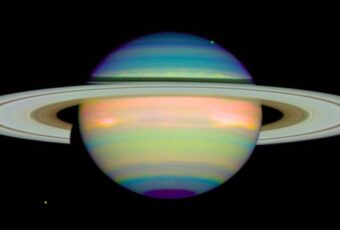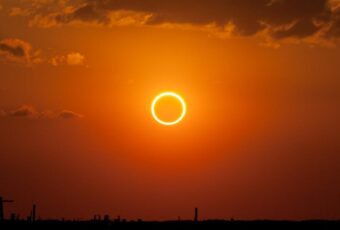King Cobra
The King Cobra can be found all throughout Asia, and in the jungles of India. It also happens to one of the most famous snakes as it is the longest venomous snake in the world. While the King Cobra is deadly to humans, it tends to hunt other snakes, lizards, and rodents more so. Scarily enough, the King Cobra has enough neurotoxin in its venom to paralyze AND kill an entire elephant over the span of a few hours. Yikes. Additionally, if a bite is left untreated, the survival rate for humans is about 40 percent.
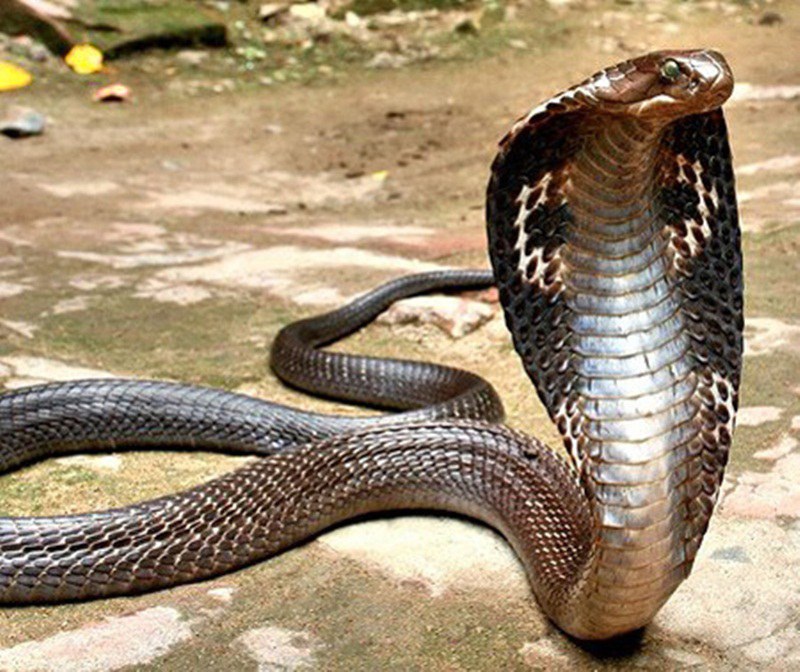
King Cobra
Death Adder
With a name like death adder, it’s not so surprising that this snake from Australia, New Guinea, and a few nearby islands makes the list. It’s extremely important to know that they’re among the most venomous and fastest striking of all the snakes in the world. Peachy. They are not active hunters but rather, they lay in wait and ambush their prey. If you are bitten by one then you’ll feel minor discomfort which will then lead to paralysis and respiratory failure within just six hours. Death is a typical result if left untreated but there is an antivenin.
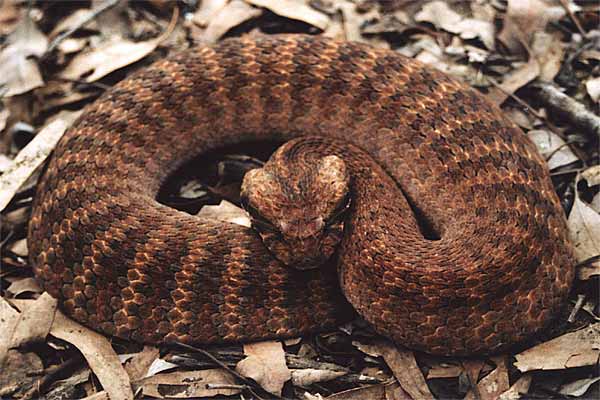
Death Adder
Black Mamba
An extreme amount of people have died all over Africa due to bites from a Black Mamba. These snakes are able to strike up to 12 times in succession and each bite is loaded with colossal amounts of neurotoxin. Scarily enough, a Black Mamba bite can pump enough venom into you with just a single bite, killing you up to 25 times over. If untreated, a bite is almost 100 percent deadly, quite often death occurs in as little as 15 minutes.
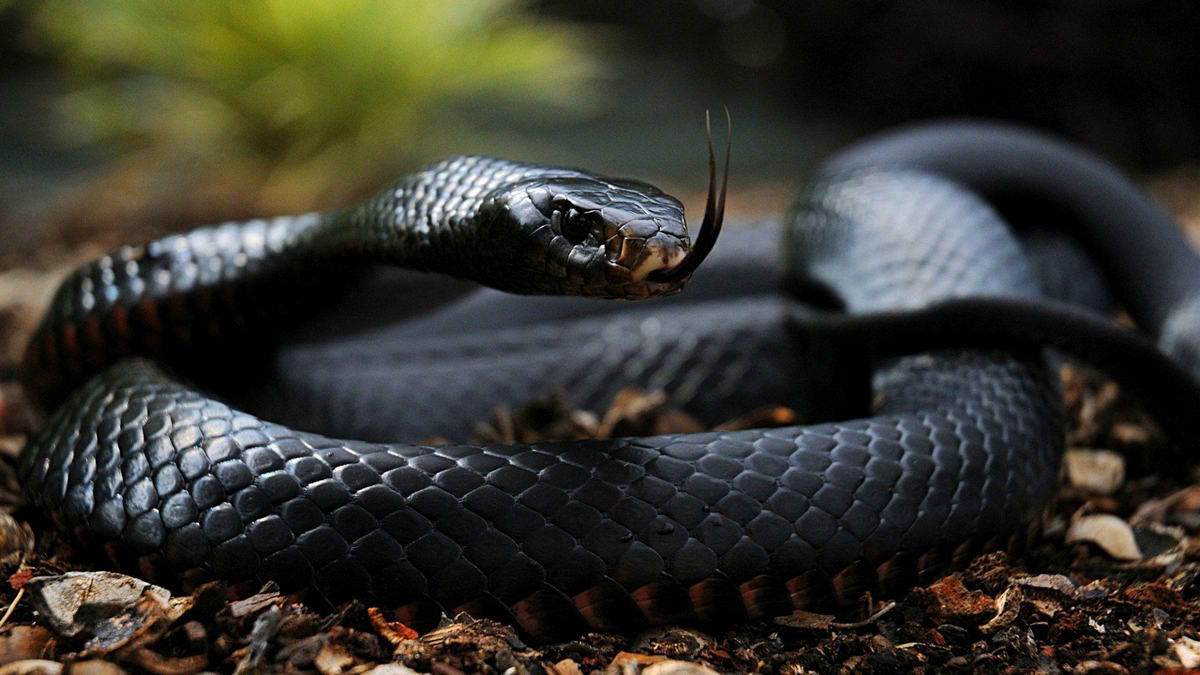
Black Mamba
Black-banded sea krait
The black-banded sea krait can be found in most of the warm waters of the western Pacific Ocean. Their venom is also ten times stronger than a cobra which means, bingo, they are very, very dangerous. Moreover these snakes tend to shy away from humans and will only attack if provoked.
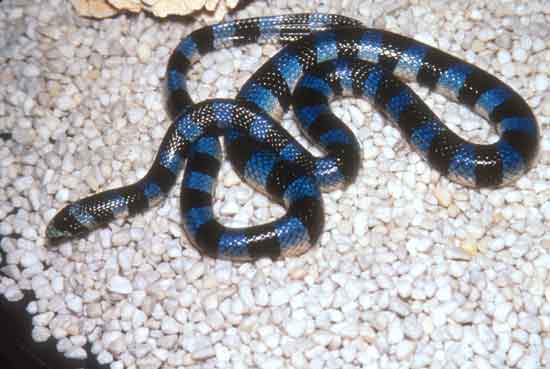
Black Banded Sea Krait
Indian Cobra
The Indian Cobra is a part of India’s ‘Big Four’ and is one of the most deadly. They make up the majority of all human snakebites in India. Furthermore, you should know that the Indian Cobra has great stature because of their placement in Indian mythos and culture, quite often they are used by ‘snake charmers’. Additionally, if you are bitten by the Indian Cobra, you will likely feel paralyzing movements in your nerves, which leads to respiratory failure or a heart attack.
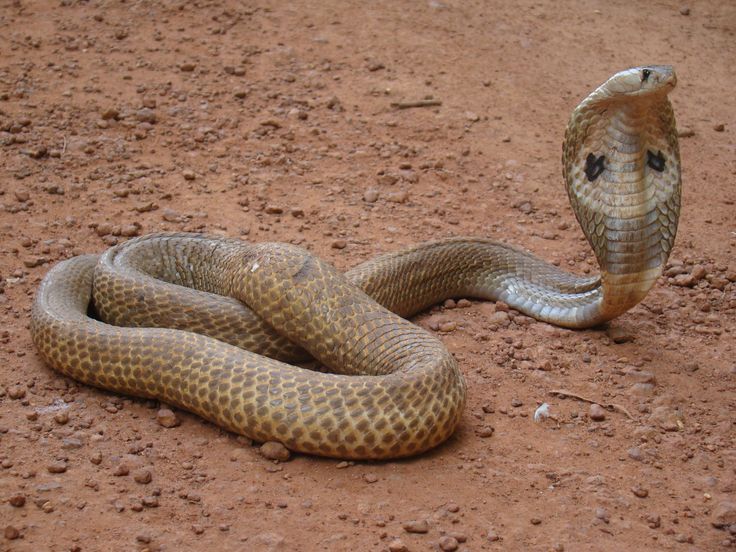
Indian Cobra
Saw Scaled Viper
The saw scaled viper can be found in India, China, and Asia. It’s important to know that these vipers are nocturnal, mean, and incredibly fast. If bitten, you will feel immediate pain which quickly leads to swelling and bleeding from your mouth. Then your blood pressure will plummet, your heart rare will slow, and for the next four to five weeks, you will experience severe pain. When untreated, you could die within a day, or suffer for two weeks straight before you eventually pass away.
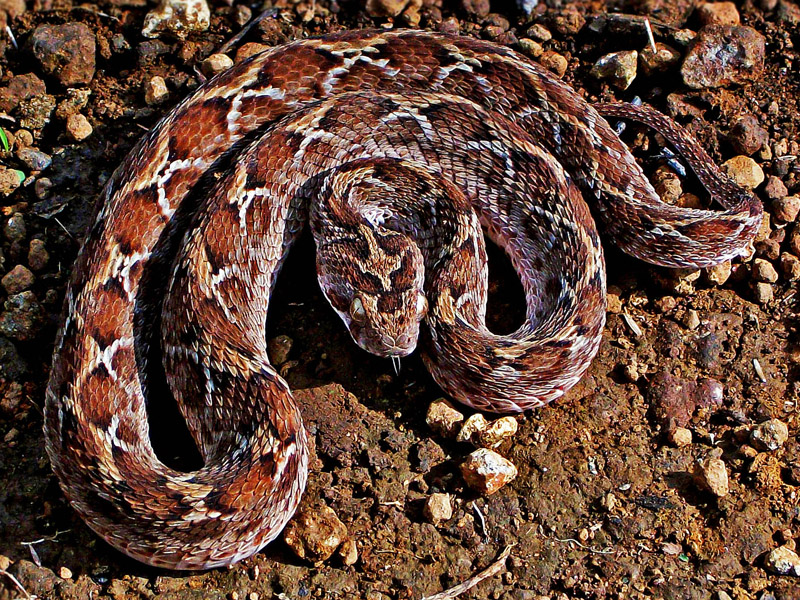
Saw Scaled Viper
Common Krait
A member of India’s ‘Big Four’, the Common Krait can grow anywhere from three to five feet in length, with an extremely flat head. Furthermore, if you should encounter one during the day, the snake will hide and if found, it’ll react rather slowly. However if you encounter it at night, the Common Krait will bite at the first sign of annoyance and will grow more agitated much more quickly. Nerve damage, muscle paralysis, and brain damage will follow if a bite is left untreated.
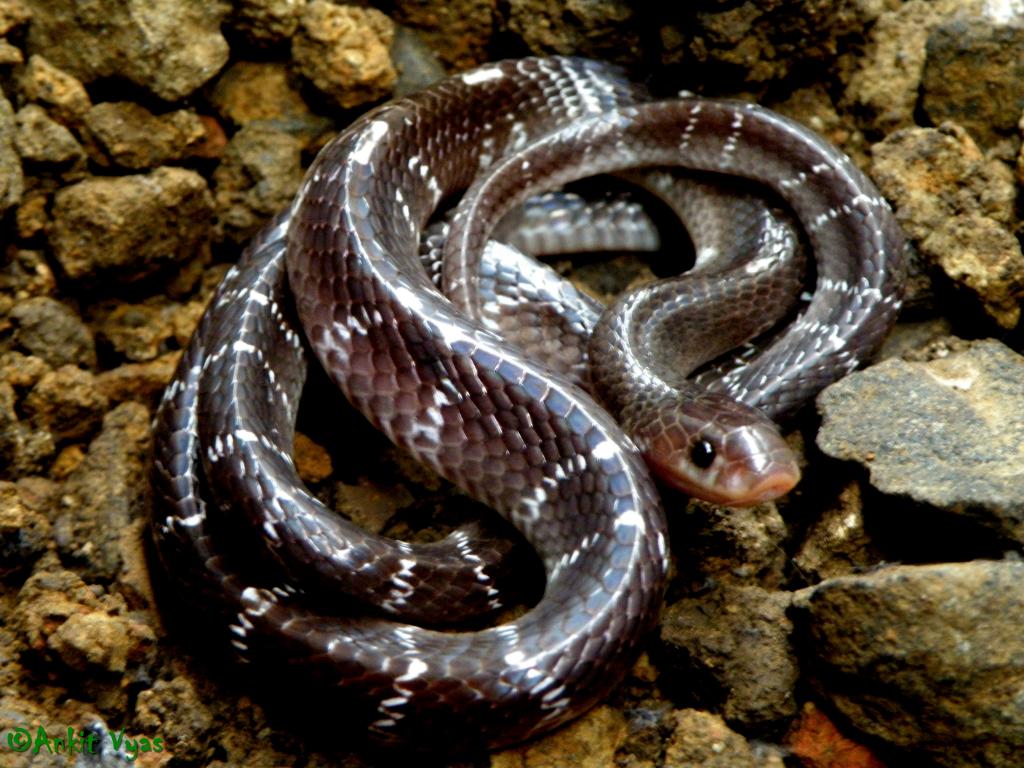
Common Krait
Inland Taipan
The Inland Taipan is a terribly deadly snake in terms of pure venom as the mixture of taipoxin and neurotoxin will lead to paralysis, blood hemorrhaging, limited breathing, and intense muscle damage. It tends to dwell in inland Australia, and is actually quite reclusive and shy. What’s more is if one does attack, you will likely be dead within 30 to 45 minutes, unless you’re treated almost immediately. That’s not very comforting.
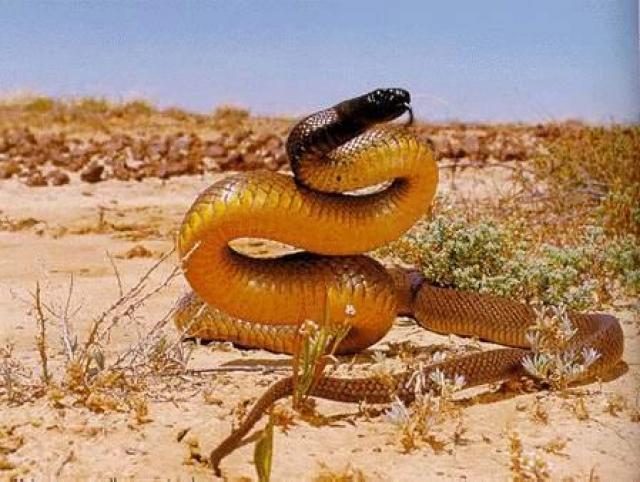
Inland Taipan
Russell’s Viper
All throughout Asia, you can find Russell’s Viper. Also known as the Daboia, it is considered one of India’s ‘Big Four’ deadly snakes. This snake is responsible for the most snakebite incidents and deaths among all other venomous snakes because of their wide distribution, aggressive demeanor, and frequent occurrences in highly populated areas. All the things no one ever wants to hear when it comes to snakes.
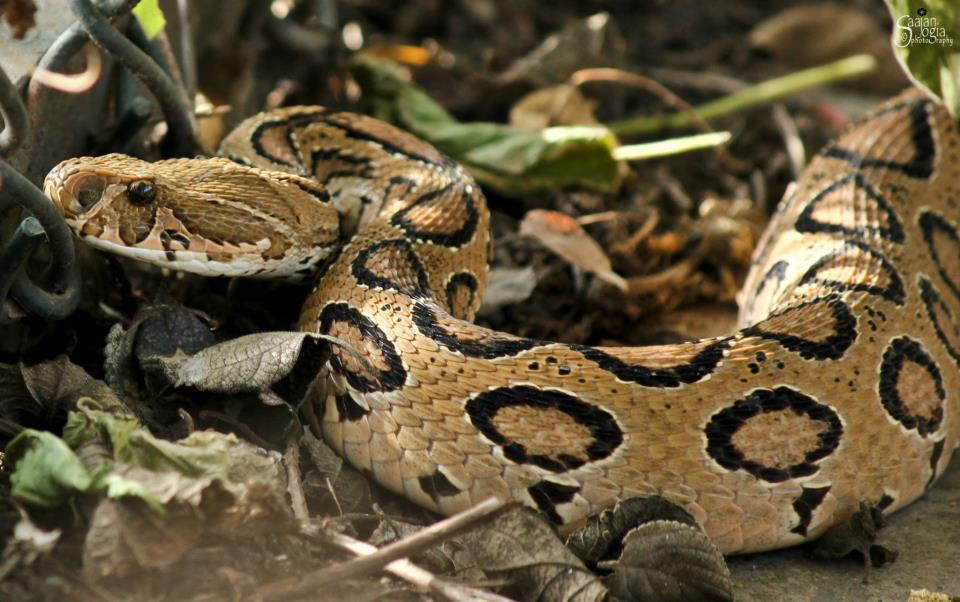
Russel’s Viper
Atheris Hispida
The Atheris Hispida is quite a unique looking snake and can be found all throughout the rain forests of Central Africa. And yes, this snake is incredibly venemos with massive eyes, bristled scales, and creepily enough, retractable claws (!!). Currently, the biggest scare factor is that there is no known antivenin.
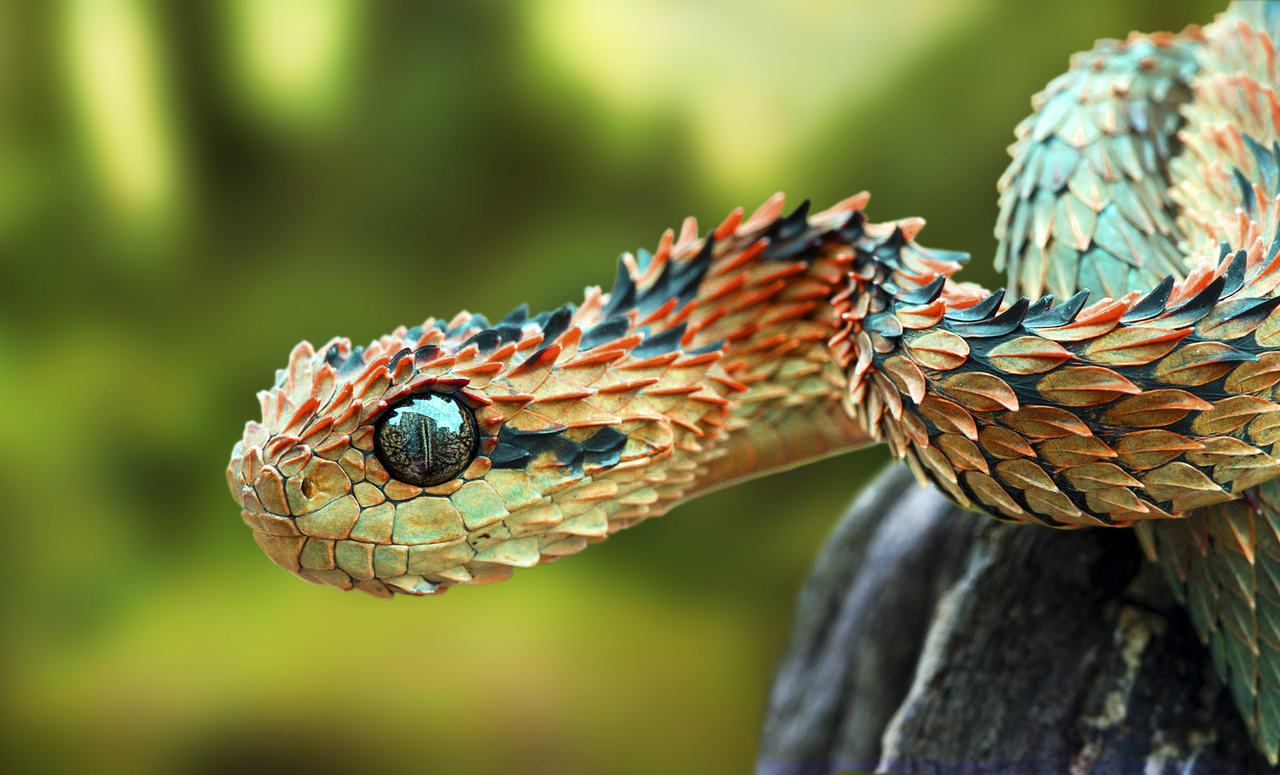
Hairy Bush Viper (Atheris Hispida)
Malayan Snake
Also known as the Blue Krait, this snake can be found throughout Southeast Asia and Indonesia. About half of the bites are fatal even if you receive the proper antivenin! Now that’s just plain wrong. The Malayan has a venom that is 16 times more toxic than the Cobra, which doesn’t give us any warm, cozy feelings whatsoever.
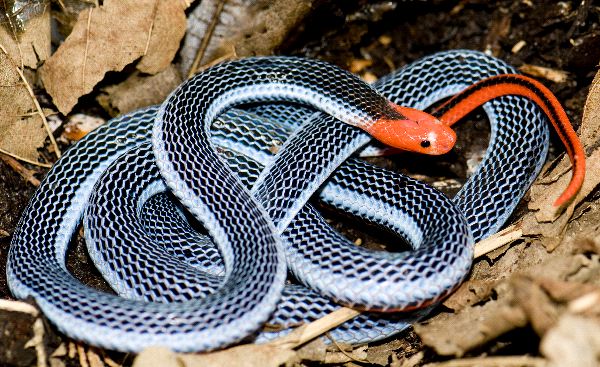
Malayan Snake
Rattlesnake
While rattlesnakes come off as extremely dangerous, killing machines that hail from North America, they’re actually severely threatened by habitat destruction, poaching, and extermination campaigns. In addition to the above, it’s important to note that they do hunt birds and snakes with the capability of biting and killing anything in its sites due to the toxicity of their venom. They’re also the leader of snakebite injuries in North America, albeit rattlesnakes rarely bite unless provoked or threatened; if treated immediately their bites are seldom fatal.
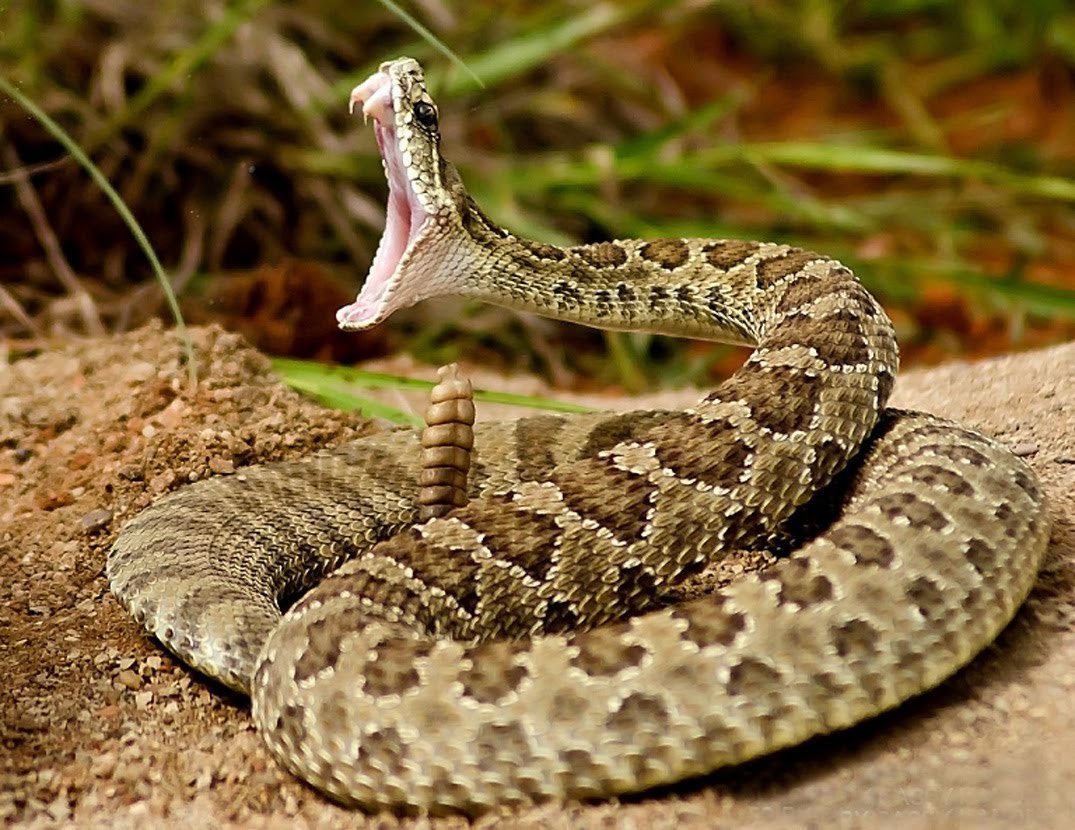
Rattlesnake
Philippine Cobra
Ugh, this snake is creepy looking. The Philippine Cobra is THE most venomous and deadliest snake in the entire Cobra species, as it can spit its venom up to 10 feet in distance! How…lovely? Yeah, no, that’s not the right world. How mortifying. The venom in the Philippine Cobra will immediately alter your nerve workings, which affects your cardiac and respiratory systems within minutes.
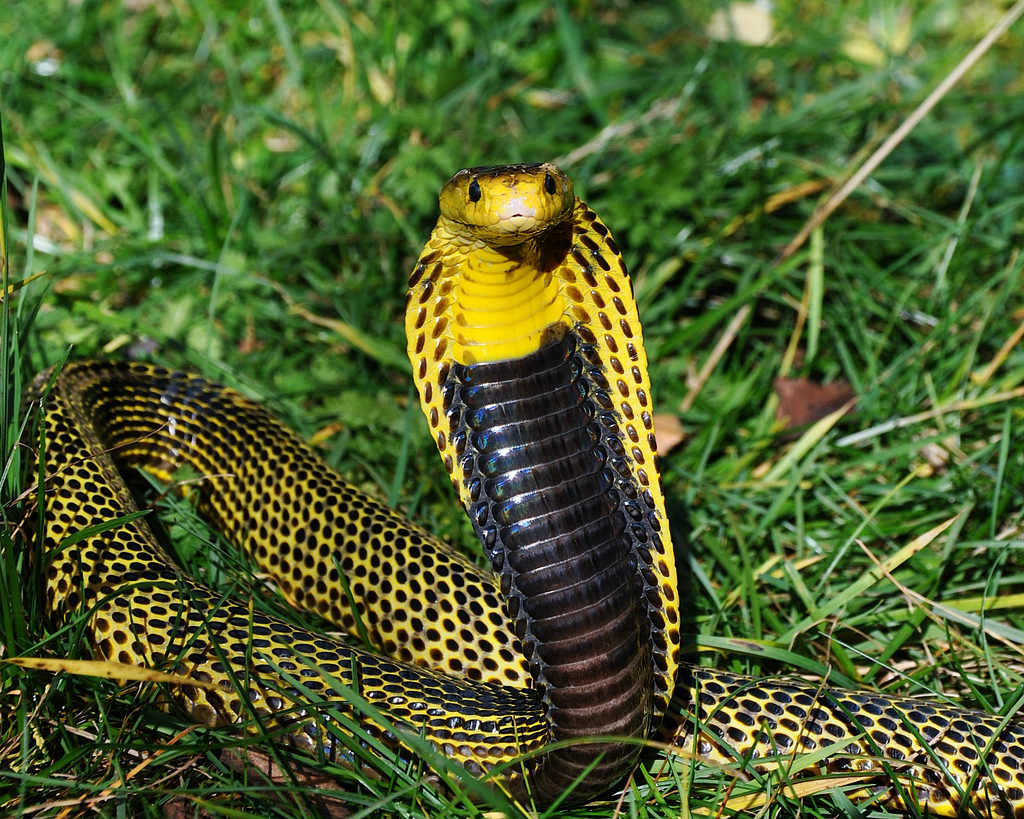
Philippine Cobra
Elephant Trunk Snake
This creepy, fat snake can be found all throughout the waters of Indonesia. It has the wrinkly, sagging skin of an elephant and can grow up to 10 feet in length, which is big enough to wrap a man and pull him underwater if he were to get caught unaware. Typically it doesn’t attack humans but that doesn’t mean it can’t kill one. Yeah, we’re not fans of this snake either.
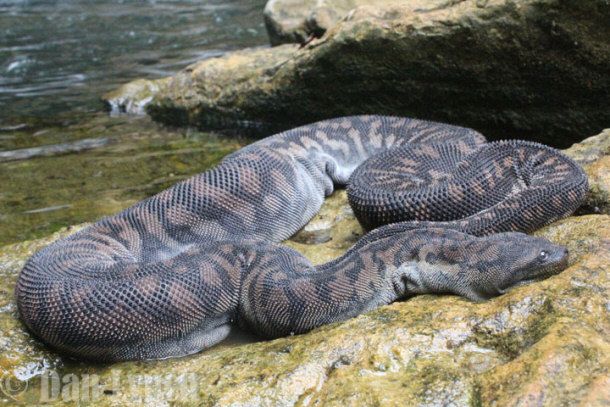
Elephant Trunk Snake
Anaconda
Fun fact, the Anaconda is big enough to swallow a human whole. Just nope. What the anaconda lacks in venom, it makes up for in its enormous size. This snake even likes to wrap victims around the midsection and compress them until they are completely crushed or suffocated. After this is when it begins to swallow you whole. Uhhhhh. No. Just NO.
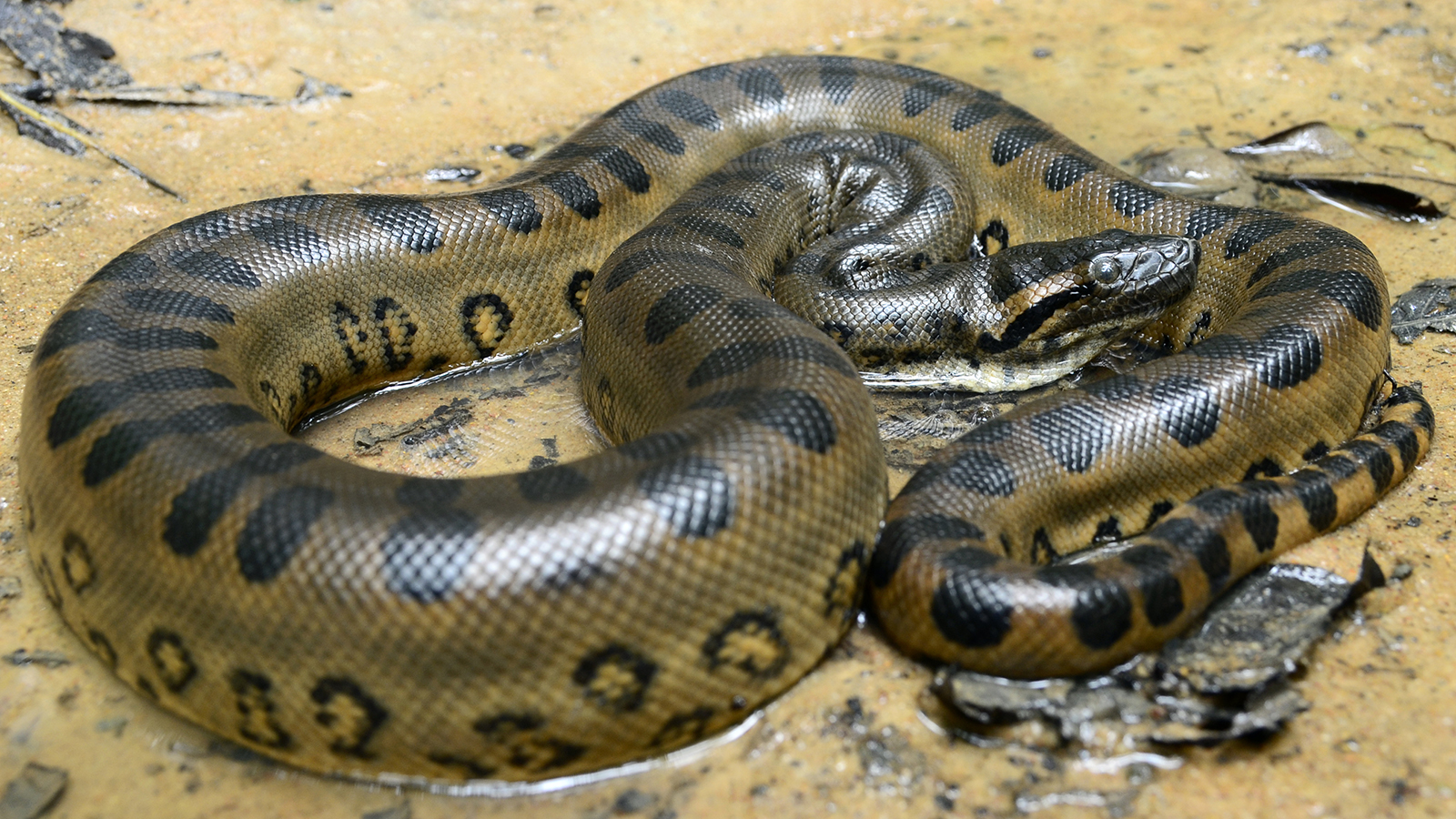
Anaconda
Boomslang
Generally found in South Africa, these snakes are fast, have the ability to climb trees, and to tote, have a deadly bite filled with venomous toxins. They have impeccable eyesight and often move their heads from side to side in order to get a better view of objects that are directly in front of them.
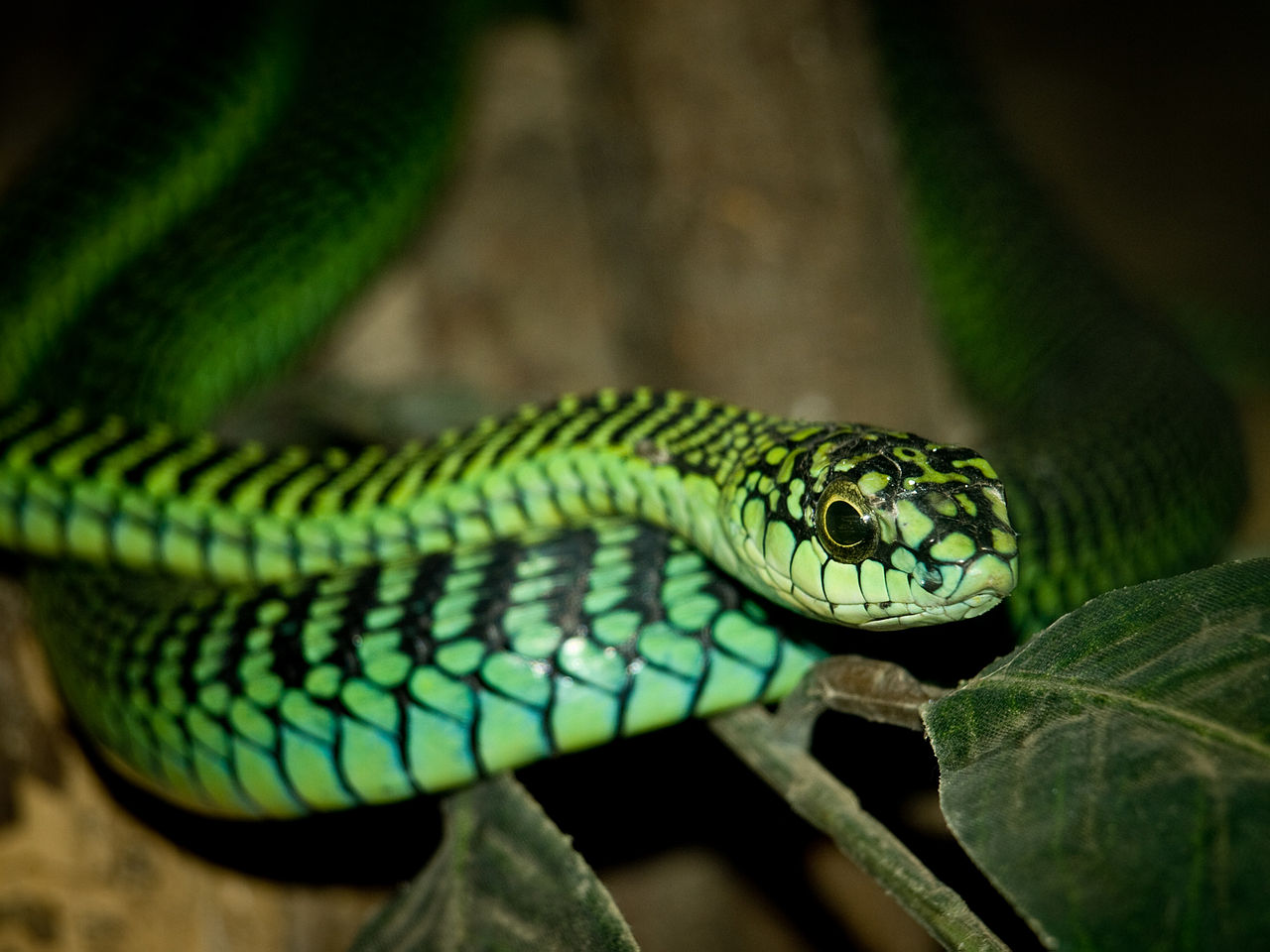
Boomslang
Peron’s sea snake
Peron’s sea snake can be found in the Gulf of Siam, Strait of Taiwan, Coral sea islands, and other places. Yes, it has an extremely toxic venom in its bite and it happens to be the only sea snake with spines on its head. How fun.
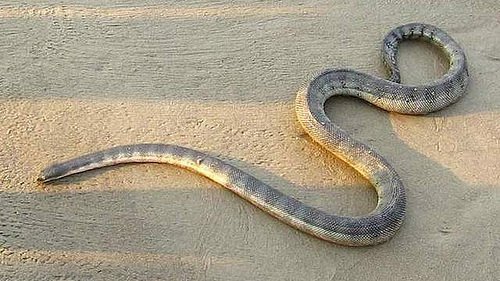
Peron’s Sea Snake
Desert Horned Viper
Up next, the Desert Horned Viper This rather large snake has long, light brown patterned dark spots, even sports horns above its eyes. Lovely. They can be found in the Middle East and northern parts of Africa so I wouldn’t book a cheap ticket any time soon. Likewise the Desert Horned Viper also has extremely potent venom so we recommend, yah know, not running into one.
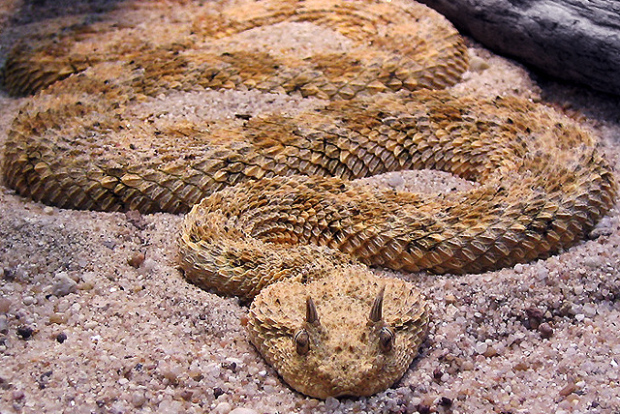
Desert Horned Viper
Eastern Brown Snake
While the Eastern Brown Snake sounds like a generic snake, it actually has enough venom to instantly kill any adult human being. Now that doesn’t bode well with anyone. Researchers advise strongly that if you encounter one, to stay still, cause that sounds so easy doesn’t it?
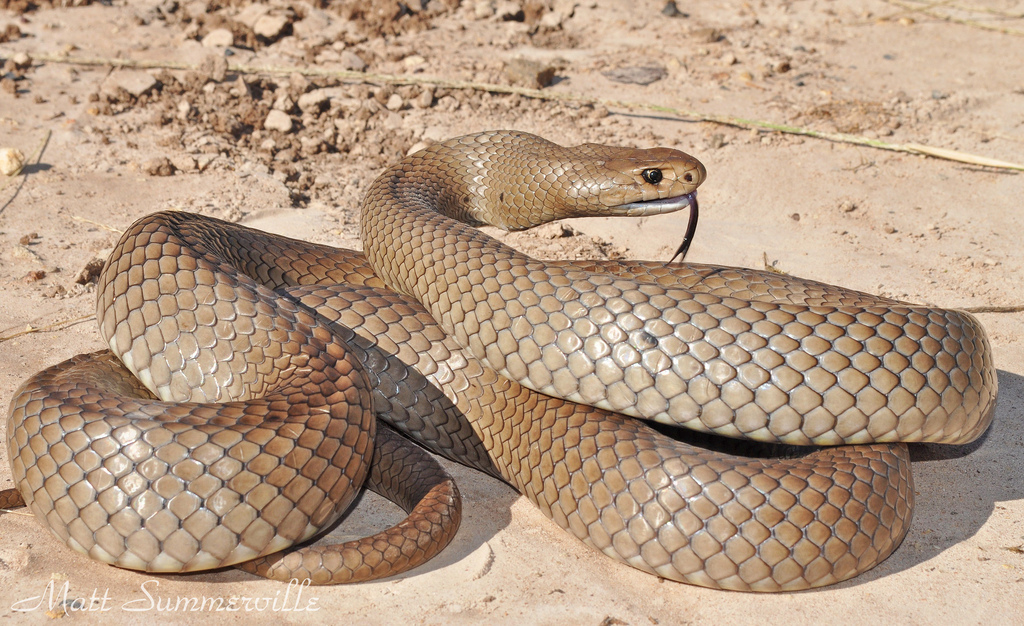
Eastern Brown Snake
Belcher’s Sea Snake
Now this is one snake you don’t want to be swimming near. The Belcher’s Sea Snake is one of the deadliest creatures that can be found, yay? No. Their venom is so incredibly potent that even just a milligram could kill thousands of adult human beings. ~GULP~
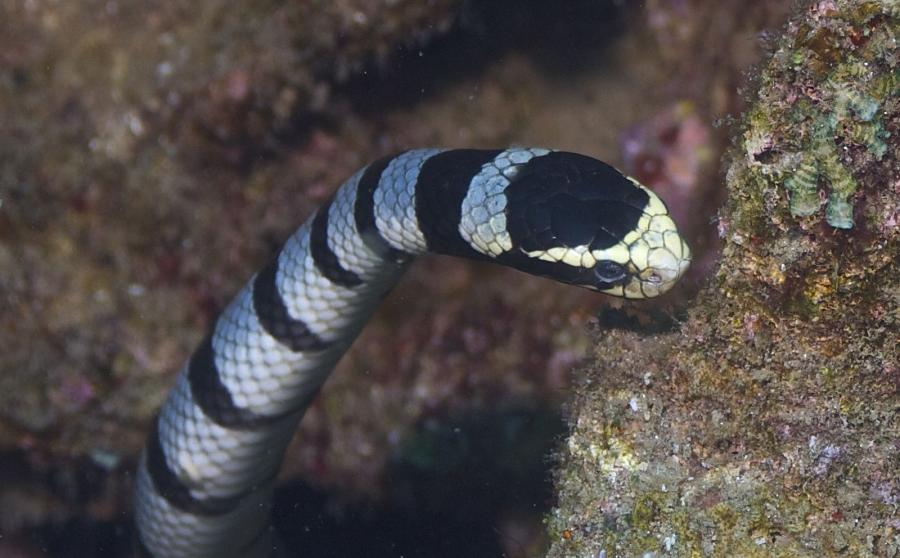
Belcher’s Sea Snake
Black Tiger Snakes
If you happened to book a cheap flight and hotel reservation in the land down under (Australia, of course) then buddy, the black tiger snake is one to watch out for. When bitten, you can die within half of an hour although fatalities are far more common in the 6 to 24 hour range – although we’re sure that’s not providing any comfort at this point. Here’s the thing, if you feel tingling, sweating, and numbness after you’ve been bitten, then you need to immediately get to antivenin before it’s too late. Tiger Snakes are actually scared humans so they tend to just slither away but if they’re cornered, they will turn aggressive and strike.
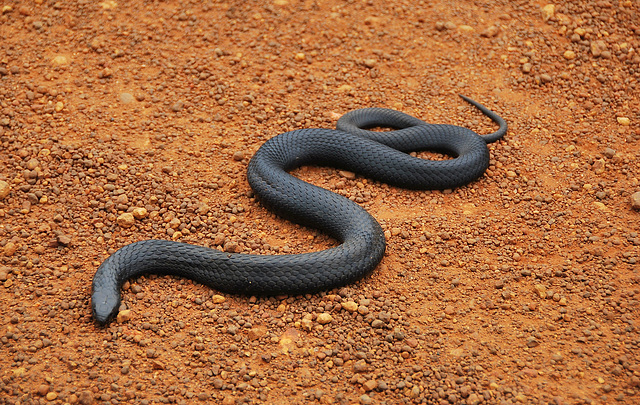
Black Tiger Snakes
Tiger Keelback
A Tiger Keelback snake is a water snake found in Japan and throughout Eastern Asia, which only grow to about 3 feet in length and are quite shy. Oh, if you mistake shyness for “not dangerous” then you’re very wrong. They have the insane ability of consuming toxic creatures, storing it in their own glands, before they release it at a later time.
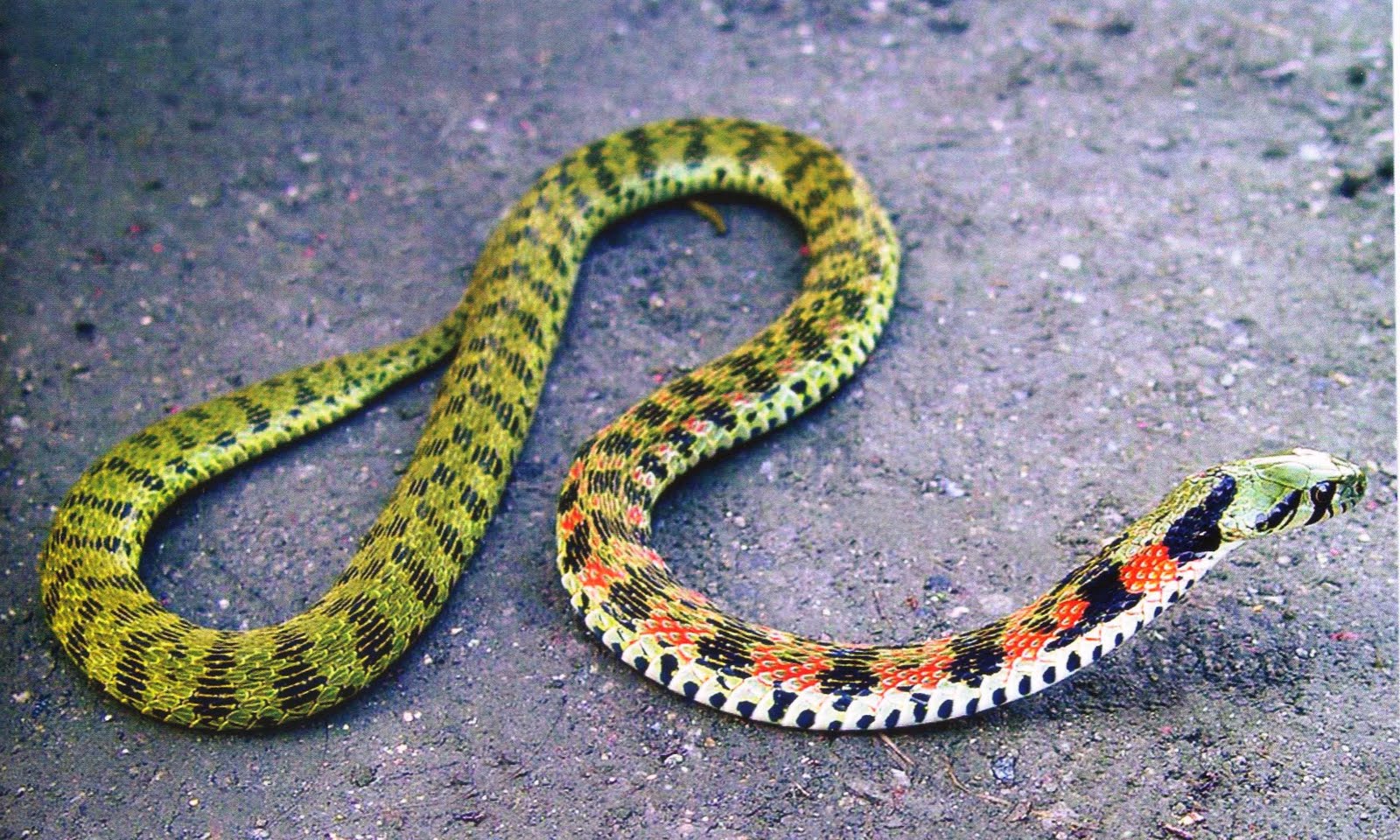
Tiger Keelback
Darevsky’s Vipers
Found in Armenia and Turkey, this is one of the most venomous snakes of that region. Darevsky’s Vipers can also be found throughout the various mountainous regions. Research has suggested that there are about 500 of these snakes left alive. Let’s count that as good news, shall we?
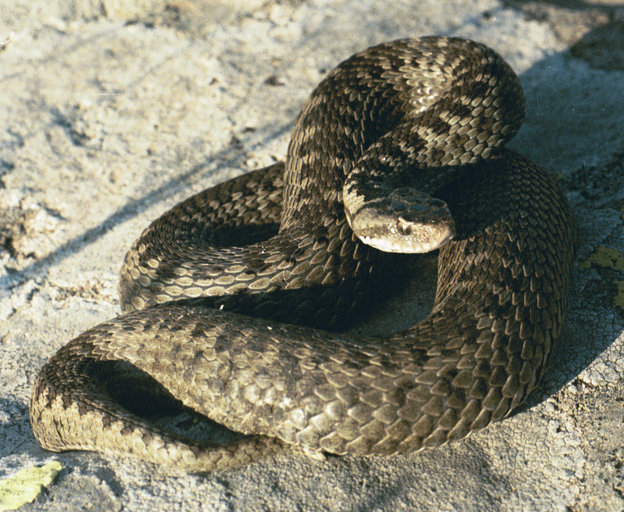
Darevsky’s Vipers
Dubois’ seasnake
The Dubois’ seasnake can be found in Papua New Guinea, New Caledonia and the northern, eastern and western coastal areas of Australia, as in the Coral Sea, Arafura Sea, Timor Sea and Indian Ocean. That’s a lot of land! It also happens to be one of the most venomous sea snakes out there, and one of the top three most venomous snakes in the entire world.
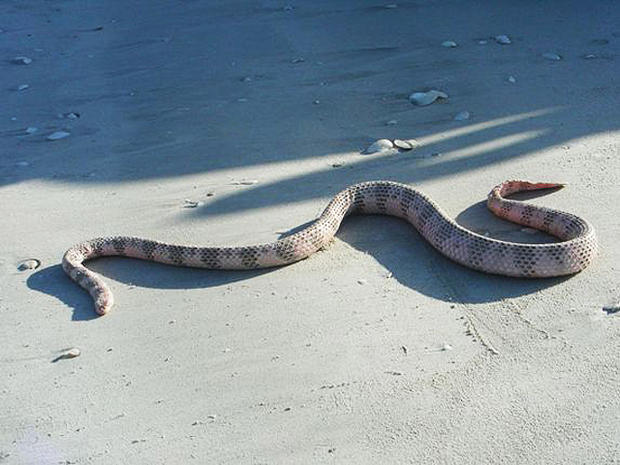
Dubois’ Sea Snake
Yellow bellied sea snake
Yellow bellied sea snake can be found in tropical oceanic waters mostly and you guessed it, this snake’s venom is extremely potent. Due to the fact that they have a yellow belly (like the name says), they’re quite easy to spot in the water. That’s a good thing somehow.
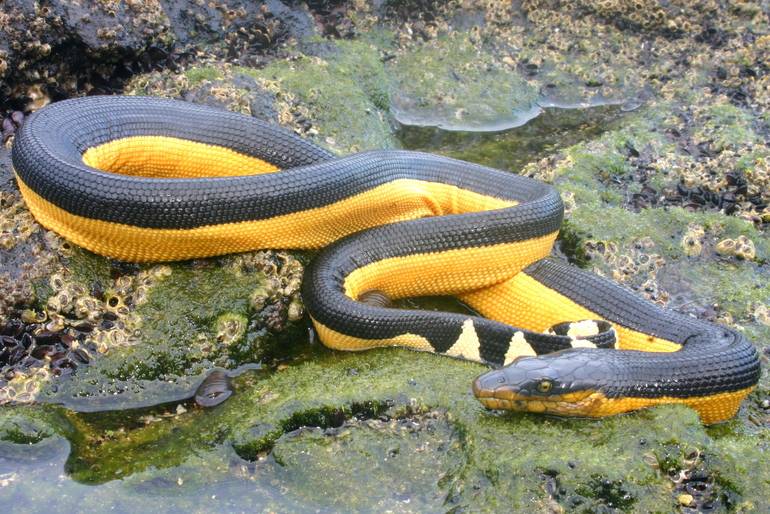
Yellow Bellied Sea Snake
Alcatrazes Lancehead
Also known as the Bothrops Alcatraz, this snake can be found on the coast of Brazil. Although it is a rather rare snake with only a few left alive. And yes, before you ask, the Alcatrazes Lancehead is just as dangerous as its name suggests.
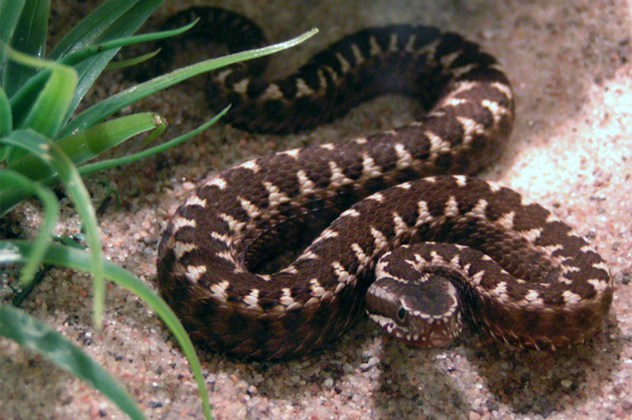
Alcatrazes Lancehead
Coastal Taipan
The Coastal Taipan native to the coastal regions of northern and eastern Australia and the island of New Guinea. Not surprisingly, most toxicological studies say that this species of snake is the sixth-most venomous land snake in the world.
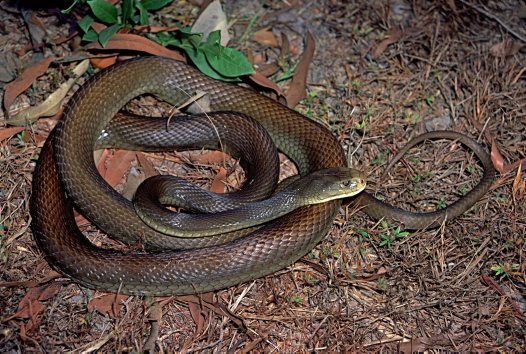
Web
Many-banded krait
Also referred to as the Taiwanese krait or the Chinese krait, this particular snake is a highly venomous species found in central and southern China and in Southeast Asia. Indeed if untreated, the mortality rate is between 25 to 35% or 70–100%. Neither of these statistics sound appealing.
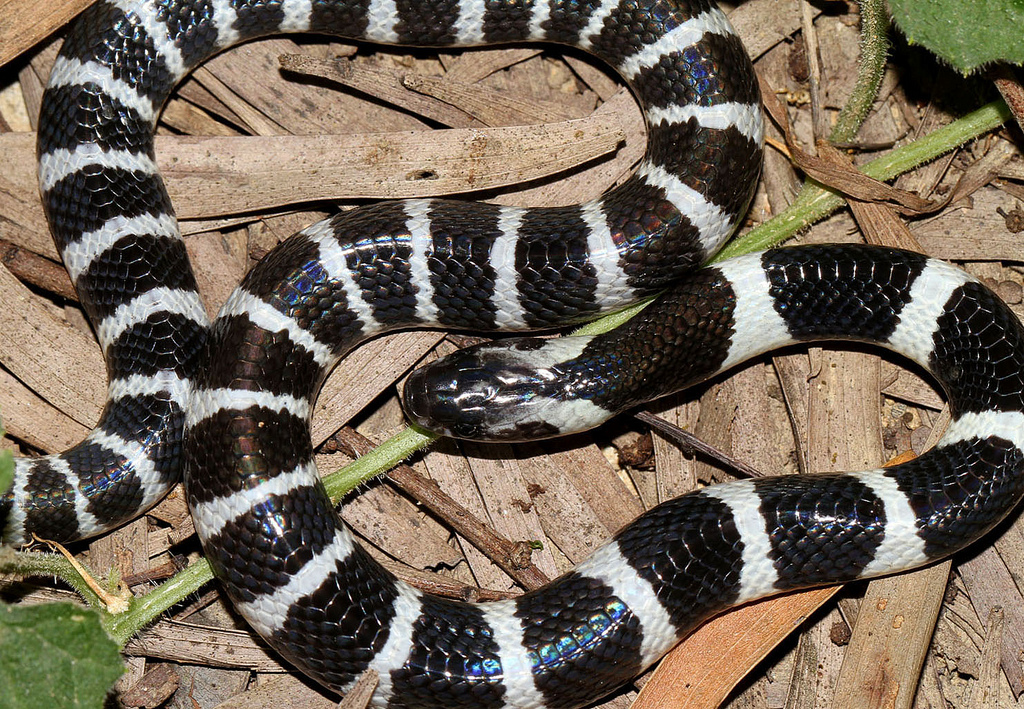
Many Banded Krait
Forest cobra
The Forest Cobra is native to Africa, commonly in the central and western parts of the continent. Bites to humans are less common than from other African snakes where a bite from this species is a life-threatening emergency.
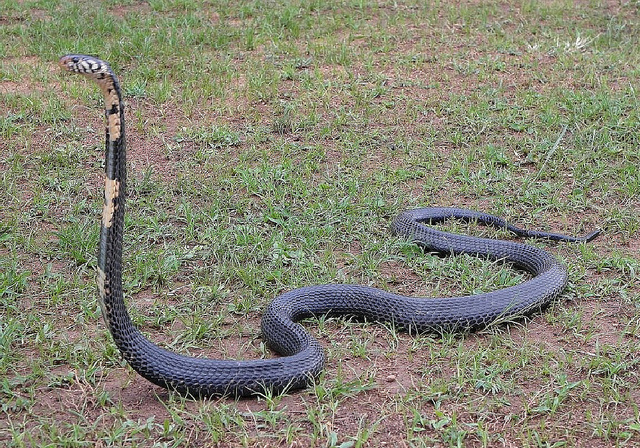
Forest Cobra
Burrowing Asp
We really don’t like this snake, at all. The Burrowing Asp is a very dangerous snake around small children as they are prone to hiding underground. Their protruding fangs are poisonous enough to cause copious amounts of damage if they just got in contact with your skin.
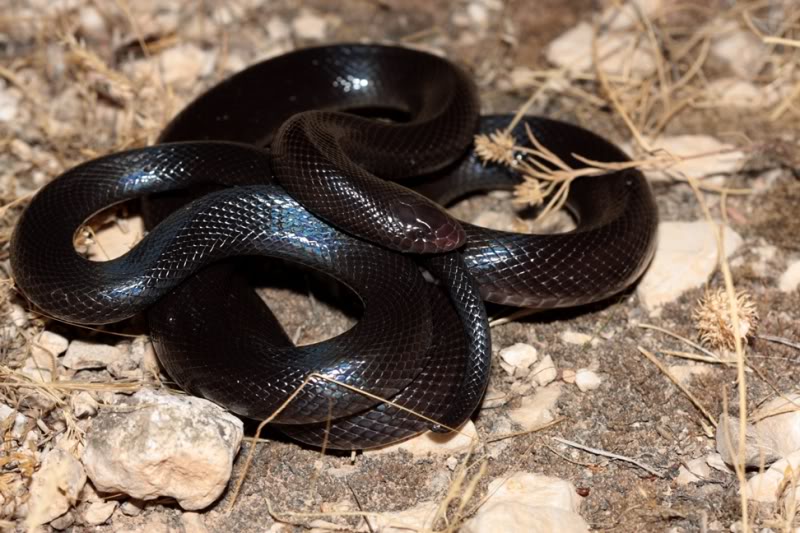
Burrowing Asp
Cape cobra
Meet just one of the most dangerous species of cobra that can be found in all of Africa. Why is it so darn dangerous? It has ridiculously potent venom and this snake is usually found around and-or in houses. The mortality rate is crazy high and it can take from an hour (in severe cases) to ten hours (or more) and leads to respiratory failure, due to the onset of paralysis, but luckily there is an antivenom.
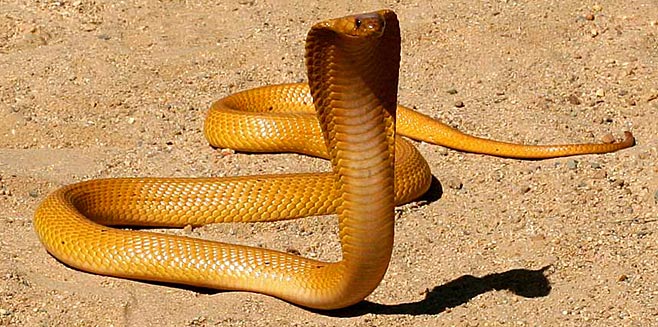
Cape Cobra
Gaboon viper
The Gaboon viper can be found in the rainforests and savannas of sub-Saharan Africa. Just like all vipers, it is venomous but this species is the world’s heaviest viperid plus (!), it has the longest fangs. That can grow up to 2 inches in length (5 cm). Gosh, if things couldn’t get worse, but oh they can, this snake also has highest venom yield of any snake.
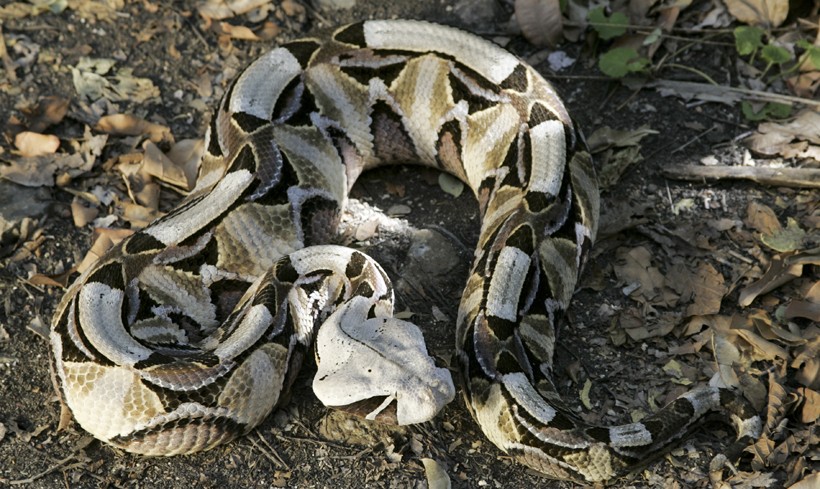
Gaboon Viper
Green mambas
I’ll be the first to admit, this snake is kinda cute, until I learned that there are three kinds of green mambas in the world and they are all highly venomous, aggressive, and unpredictable. The three kinds include Western, Eastern, and Jameson. Additionally, all three are highly arboreal, alert, lightning quick, and agile. Plus their venom is more rapid-acting and the dendrotoxins are much more devastating to the central nervous system. Peachy. Oh no, it isn’t!

Green Mambas
South American bushmaster
These snakes are the longest venomous snake in the Western Hemisphere, such as South America and forests east of the Andes. Always remember that they are large, fast, and will turn aggressive when cornered.
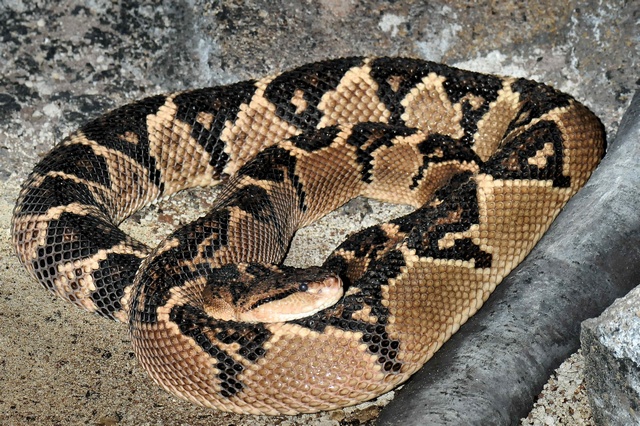
South American Bushmaster
Sharp-nosed pit viper
The freaky looking Sharp-nosed pit viper is especially dangerous, and fatalities from bites are not unusual. Their venom is a potent hemotoxin that is strongly hemorrhagic, symptoms include severe local pain and bleeding which may begin almost immediately. There is an antivenom.
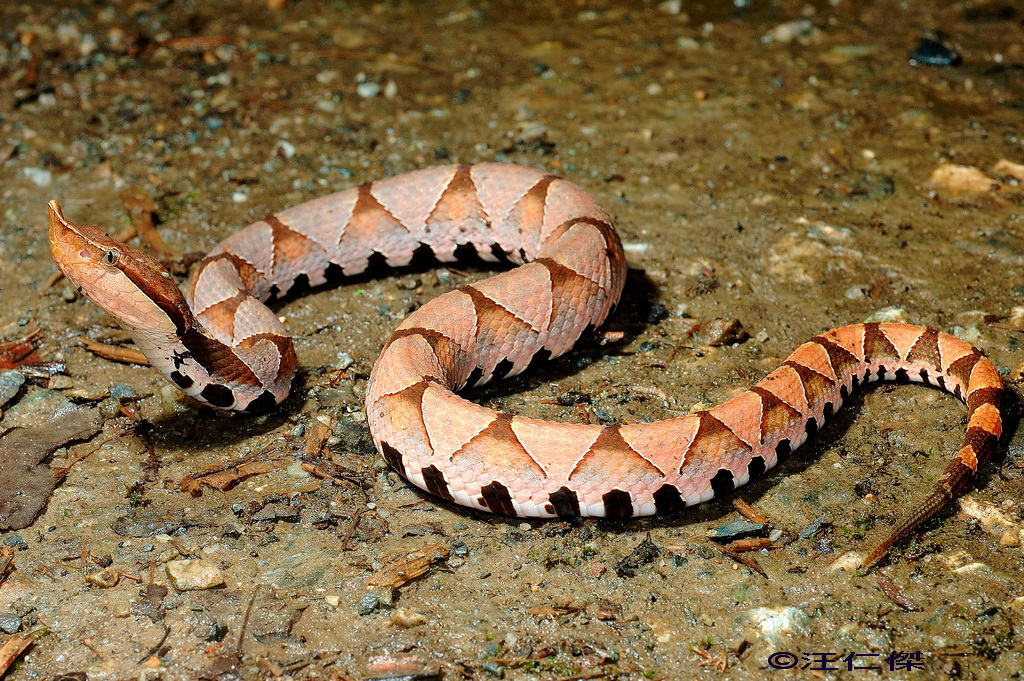
Sharp Nosed Pit Viper
Beaked sea snake
This snake has quite the amount of names but it still makes it scary as heck, let’s see, we have the hook-nosed sea snake, common sea snake, or the Valakadyn sea snake. This particular snake is a highly venomous species of the sea snake that is common throughout the tropical Indo-Pacific. It causes more than 50% of all bites that are caused by sea snakes, as well most of the envenomings and fatalities. I’m overjoyed with this news, oh wait.
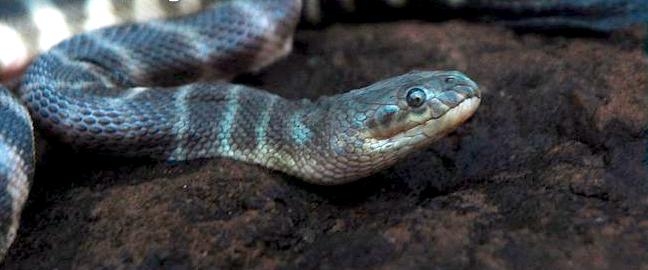
Beaked Sea Snake
Mojave rattlesnake
As all other rattlesnakes, the Mojave won’t hesitate to defend itself and vigorously if it is disturbed. On top of that, their venom is considered one of the most debilitating and potentially deadly in all of the North American snakes. The good news is that chances of survival are great if you seek medical attention immediately after a bite.
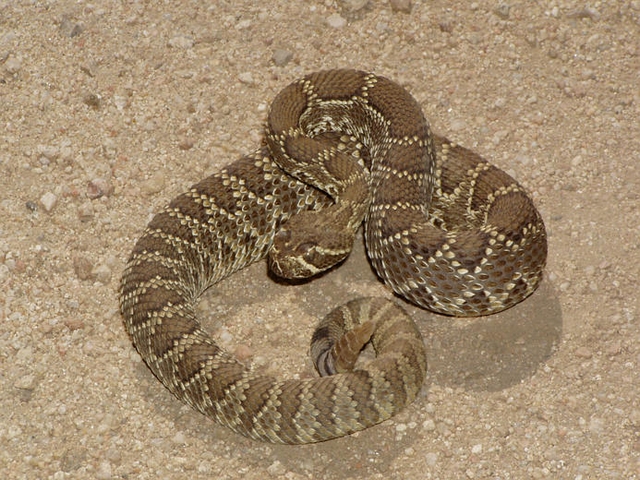
Mojave Rattlesnake
Cascabel
Also referred to as the Neotropical rattlesnake, Cascabel, or Crotalus durissus. Their venom is highly toxic and they are also responsible for a great deal of human fatalities.
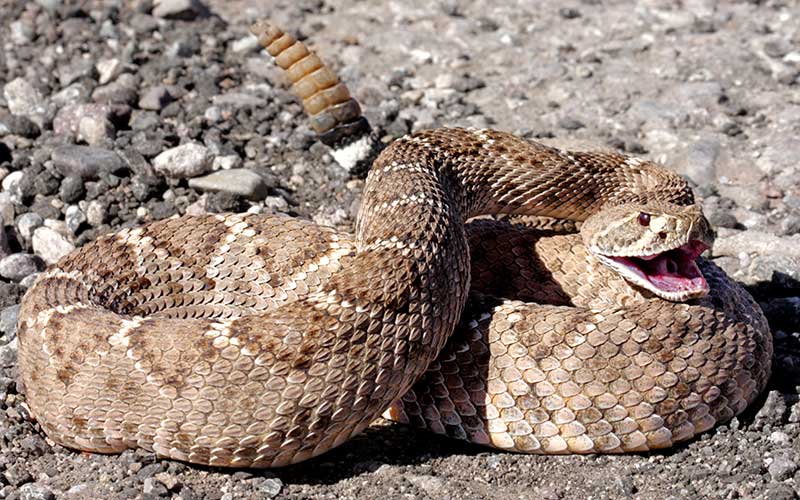
Cascabel
Caspian cobra
The Caspian cobra is also called the Central Asian cobra, Oxus cobra or Russian cobra, and you can find this scary fella in Central Asia. To make things worse, this species of snake is aggressive and bad-tempered. They do tend to avoid humans as much as possible, but they will turn fiercely aggressive if they feel threatened or cornered. And here’s the best part, it is the ~most~ venomous species of cobra in the entire world. How that’s the best part is beyond me, just try to avoid running into one, okay? Okay.
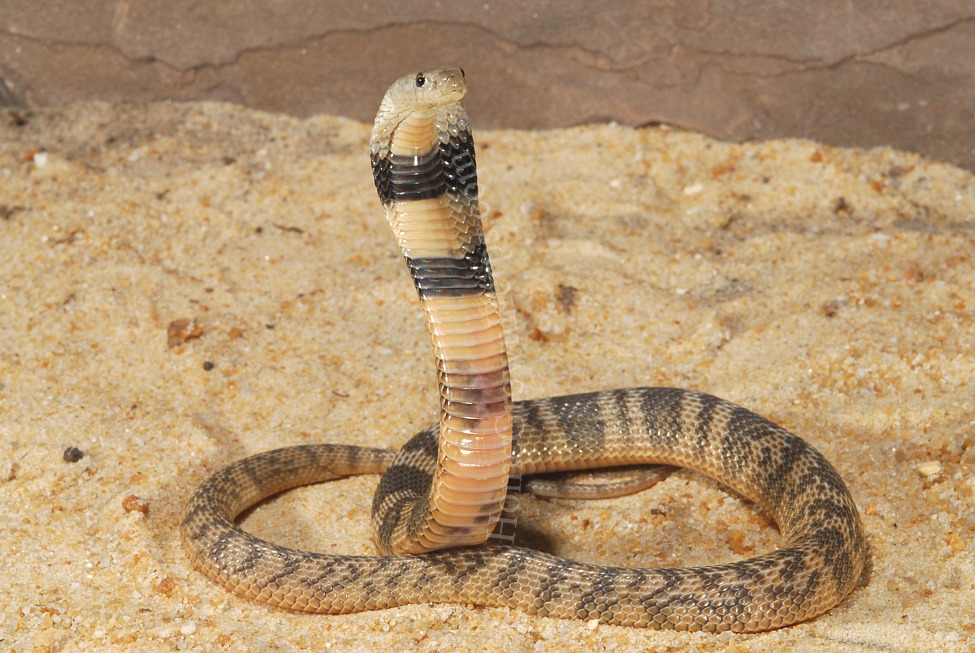
Caspian Cobra
Terciopelo
This sure is one freaky looking snake. It goes by the name of either Bothrops asper or terciopelo, never know, that tidbit could come in handy one day. And yes, this snake is a venomous pit viper species hailing from southern Mexico to northern South America. Often referred to as the “ultimate pit viper”, this snakes is usually found in a wide range of lowland habitats, often near human habitations.
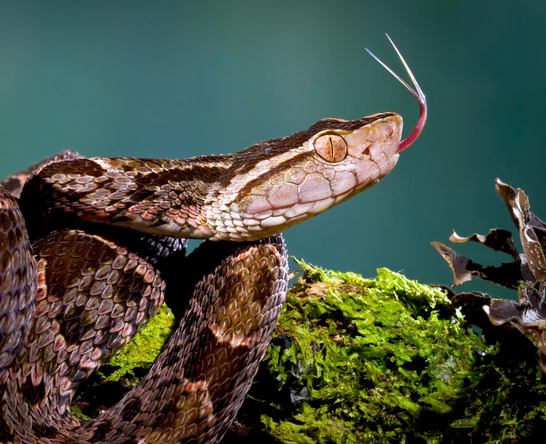
Terciopelo
Malayan pit viper
This snake, act surprised, has a reputation for being ill-tempered and quick to strike. I said, act surprised, what you though they were all cute and cuddly? It can be found in Southeast Asia.
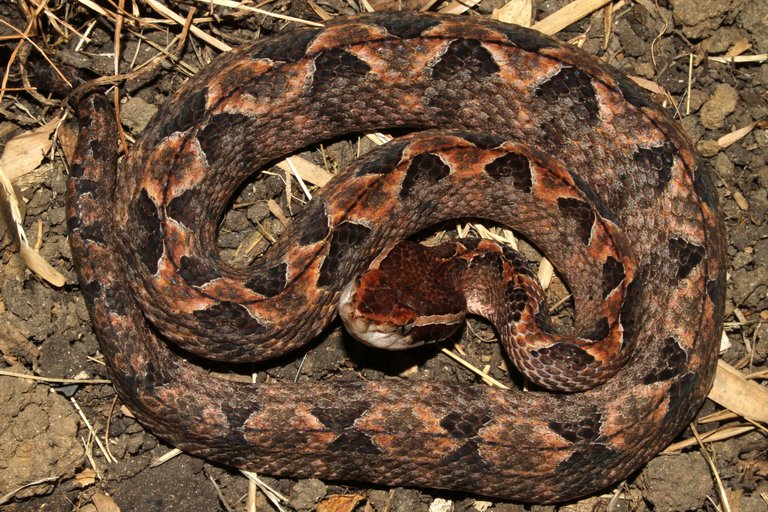
Malayan Pit Viper
Jararaca
The Jararaca is probably one of the best-known venomous snake that can be found in wealthy and heavily populated areas of southeastern Brazil. In fact, between 1902 and 1945, this snake was responsible for just over 52% (3,446 cases) of snakebites, with a 0.7% mortality rate (25 deaths).
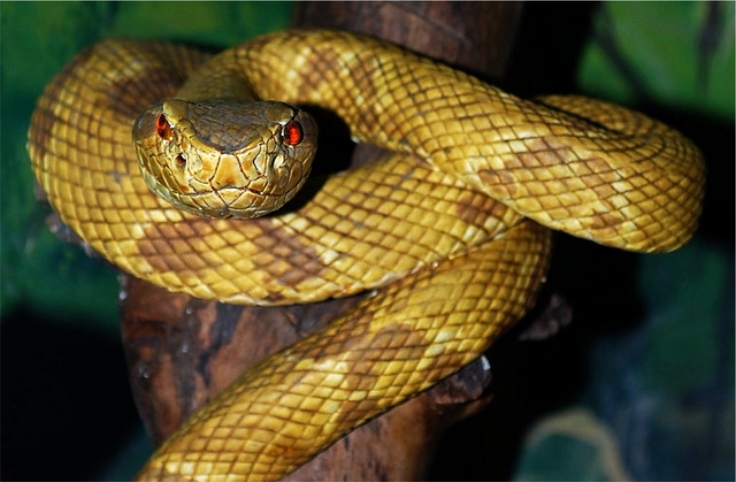
Jararaca
Tiger rattlesnake
The Tiger rattlesnake may have a low venom yield but it is still regarded as the most toxic of all rattlesnake venoms. As it does have the highest venom toxicity in the Western Hemisphere. While they tend to be reluctant to bite, tiger rattlensakes are aggressive so keep your distance if you run into one.
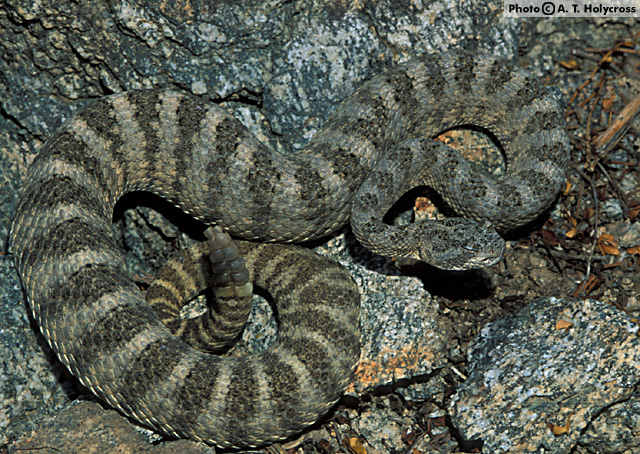
Tiger Rattlesnake
Common death adder
Native primarily to Australia, the Common death adder (and boy, what a name that is) contains a high toxic neurotoxin which causes paralysis or even death. It delivers one of the fastest strikes among all other venomous snakes that have been recorded in Australia. If bitten, death occurs within six hours, so best to avoid these buggers.
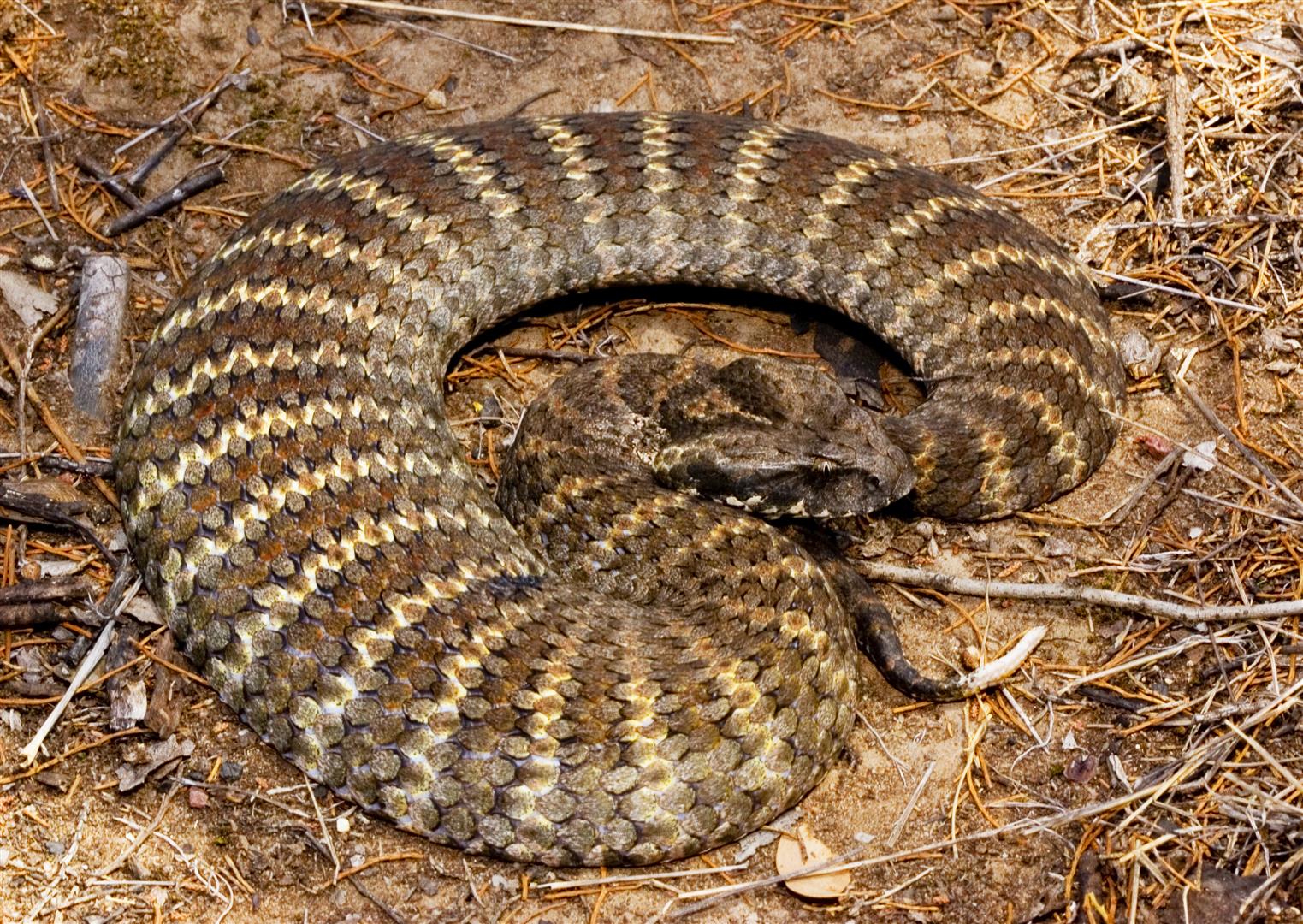
Common Death Adder, Acanthophis Antarcticus, Bruce Thomson.
Western Brown snake
The Western brown snake, or as it’s called scientifically Pseudonaja nuchalis, is a greatly venomous species common in Western Australia. The venom it produces is a powerful neurotoxins, nephrotoxins and a procoagulant. Now because they have small fangs, their bites can sometimes be painless. If bitten though, you can experience headaches, nausea/vomiting, abdominal pain, severe coagulopathy and sometimes, kidney damage.
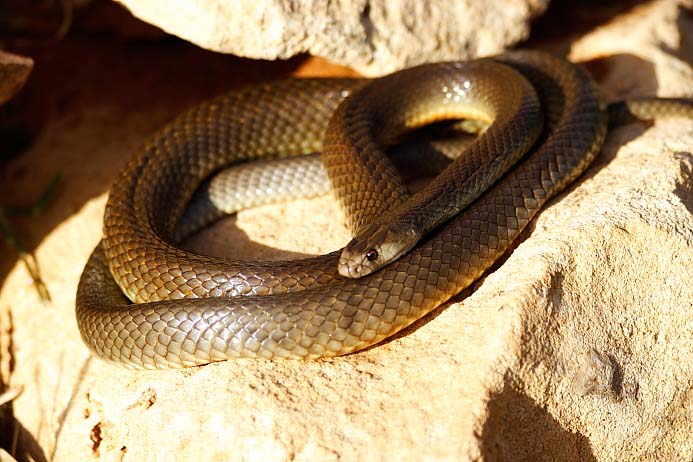
Western Brown Snake
Jameson’s mamba
Known to be rather aggressive and defensive, oh lovely, with an average venom yield per bite of 80 mg, which means it can deadly in as little as 30 to 120 minutes after a bite.
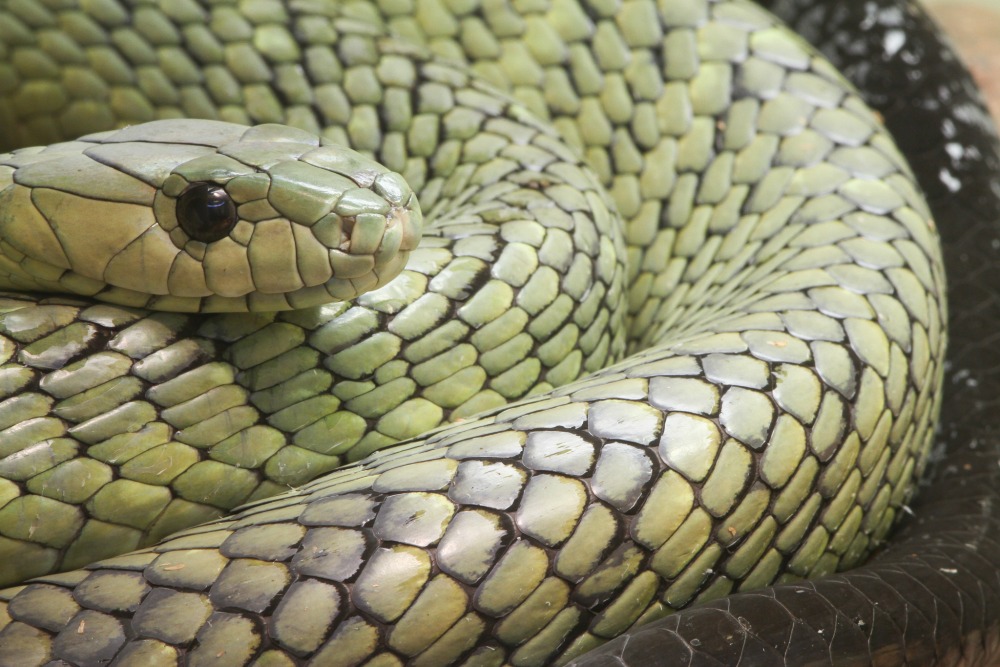
Jameson’s mamba
Chinese Cobra
You guessed it, the Chinese Cobra is a highly venomous member of the true cobras family. Not surprisingly, it leads in snake bites in mainland China and Taiwan.
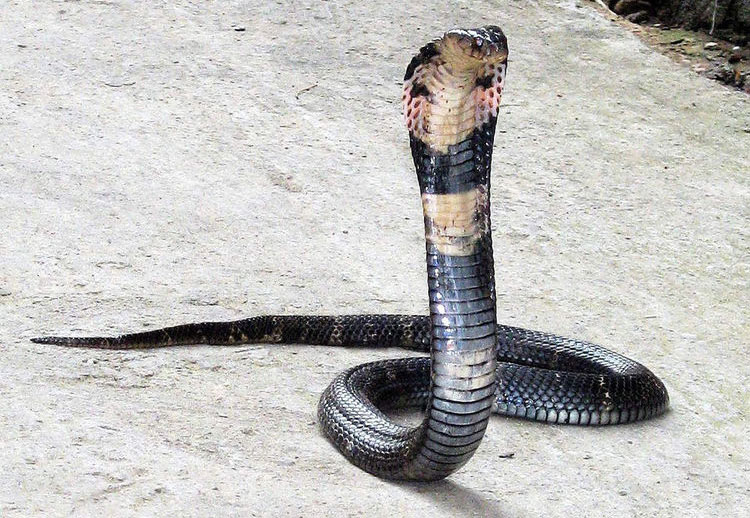
Chinese Cobra
Monocled Cobra
The Asian Monocled cobra (or Naja kaouthia) is actually a medically important species because it is responsible for an insane amount of bites throughout its range. Drowsiness, neurological and neuromuscular symptoms will manifest earliest if bitten; hypo-tension, flushing of the face, and pain around the bite typically sets in within just one to four hours.

Monocled Cobra
Egyptian Cobra
Yet another member of the Cobra family which causes a rather significant amount of bites AND human fatalities. The Egyptian Cobra has quite large fangs and also can produce large quantities of venom.
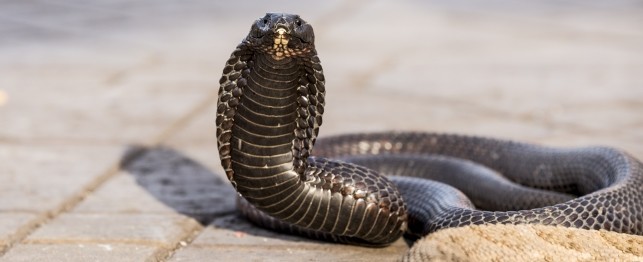
Egyptian Cobra
Mali cobra
Native to western Africa, the Mali Cobra is credited with inflicting an alarming number of fatalities in the area.
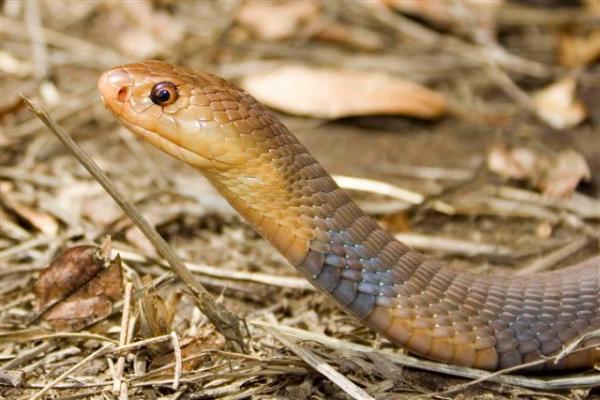
Mali Cobra
Water Moccasin
Venom of the Water Moccasin destroys any and all blood cells, which leads to a reduction in clotting of the blood, and finally causes hemorrhage of body parts. Moreover, they enjoy holding their creepy (in my opinion) head at a 45¼ angle.
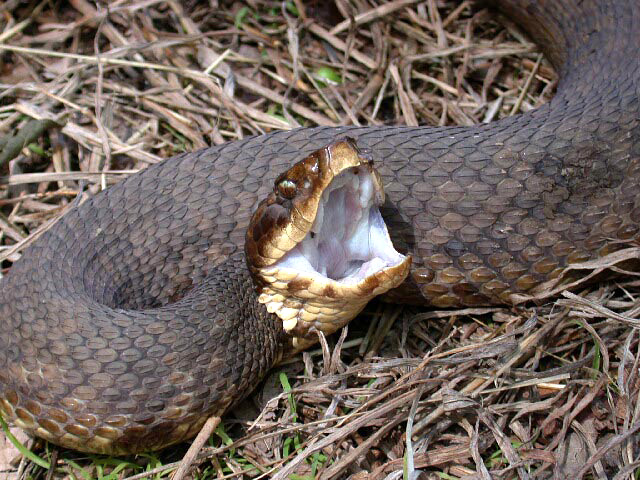
Water Moccasin
Green Anaconda
Just when you thought it couldn’t get any worse, huh? We get to the Green Anaconda, which contains the capability of growing as long as a city bus(!) and can get to the weight of two grown men.
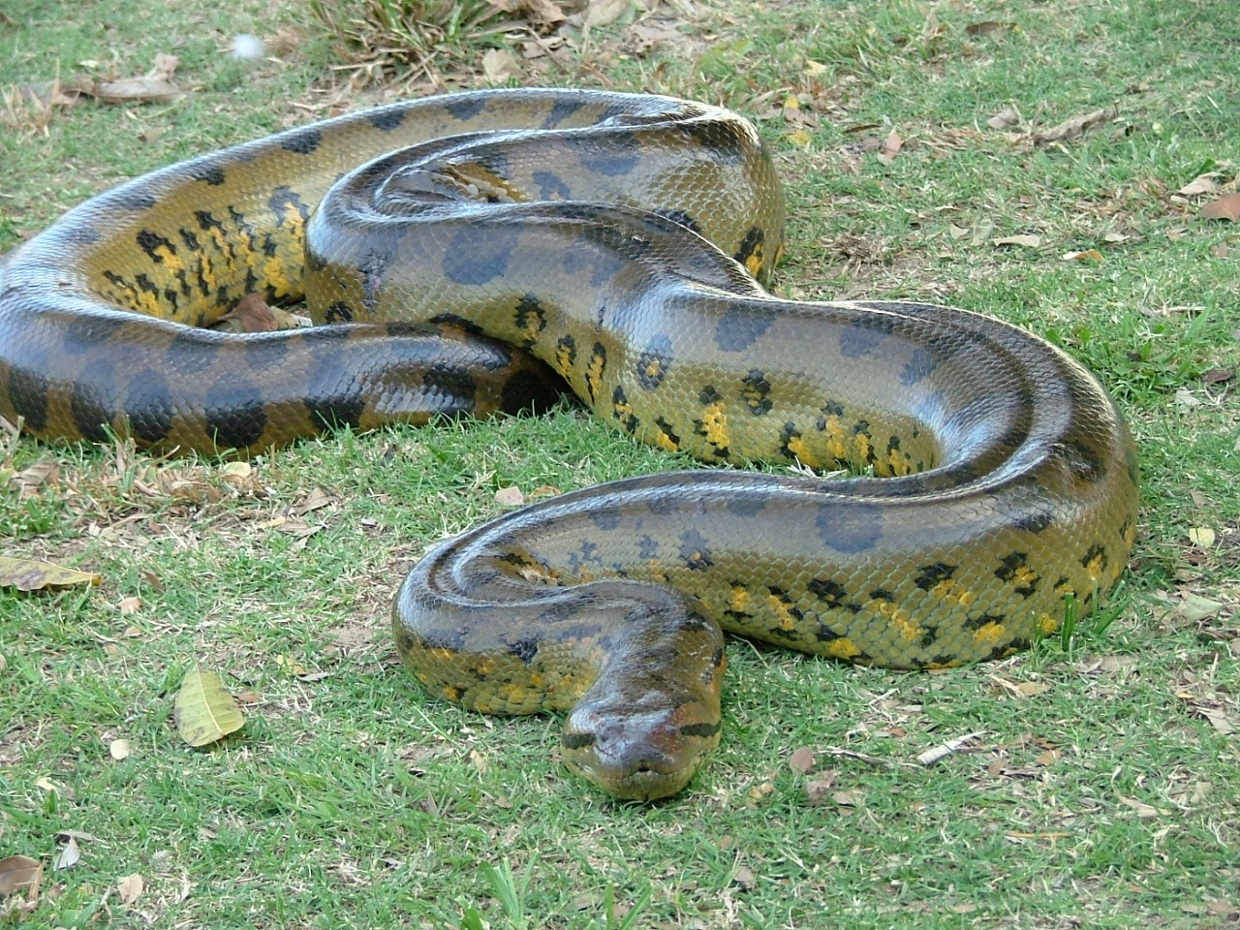
Green Anaconda
Reticulated Python
Reticulated Pythons are what’s known as ambush hunters, meaning they wait until their prey wanders within striking range before they seize the victim in their coils and kill via constriction suffocation. Fun? NOPE.
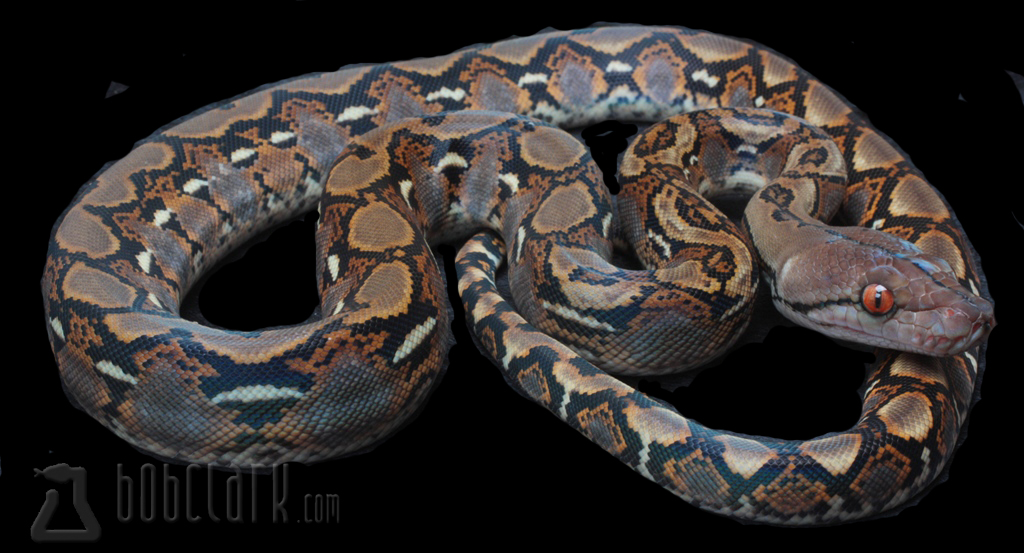
Reticulated Python
Eyelash Palm Pit Viper
The Eyelash Palm Pit Viper is up next. This fella gets its name from the fact that it has upturned scales above its eyes. It’s this feature which may help in its ability to disguise itself. Although the fact that it’s bright yellow might kill that chance.
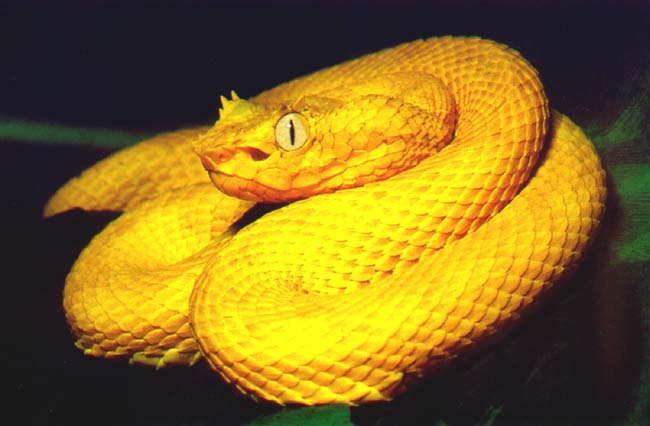
Eyelash Palm Pit Viper
African Rock Python
A massive serpent which can weigh up to 135 kilograms (298 lbs) and can even grow to six meters (20 ft), making it basically impossible to fight off. What no one ever wants to hear when it comes to dangerous and deadly snakes really.
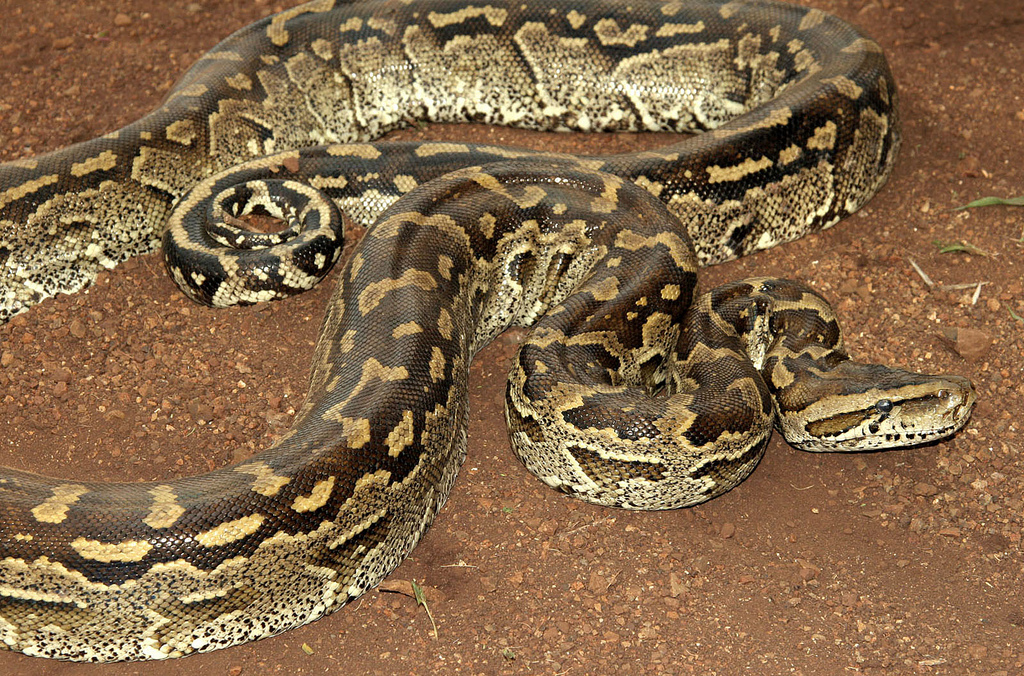
African Rock Python
Southern Pacific Rattlesnake
When the Southern Pacific Rattlesnake is on the defensive, it has the upper hand in one pretty powerful method: intense “Flash-like” speed. Reportedly, it can reach speeds of up to 12 kilometers an hour (7.5 mph) and can also strike at 2.5 meters per second (8.2 ft/sec.). **GULP**
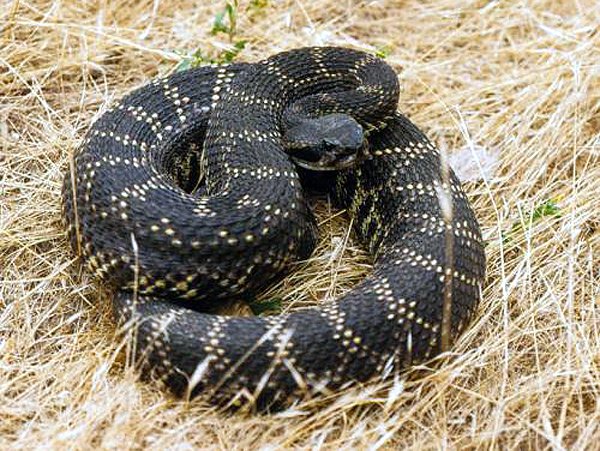
Southern Pacific Rattlesnake
White Lipped Green Pit Viper
So this deadly snake’s forked tongue possess molecules of scent into something that is known as the Jacobson’s organ on the roof of the mouth, which will alert the brain of a potential meal in the vicinity.
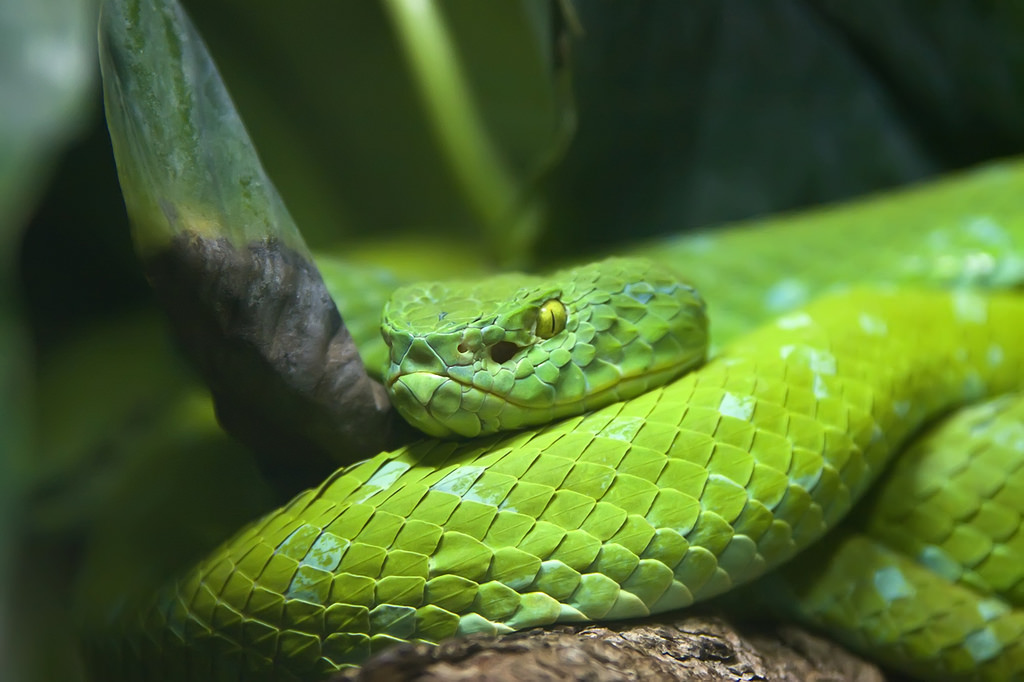
White Lipped Green Pit Viper
Faint-banded sea snake
Found in the waters of south East Asia and northern Australia – won’t be looking at a cheap flight there anytime soon. This deadly snake is also known as the Hydrophis belcheri.
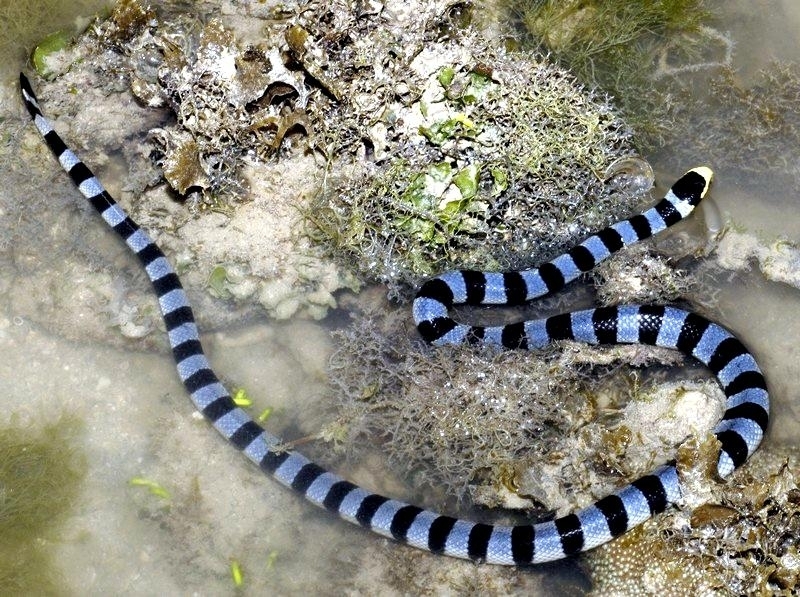
Faint Banded Sea Snake




